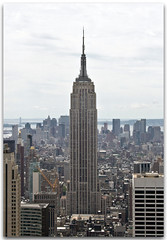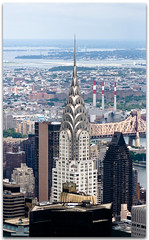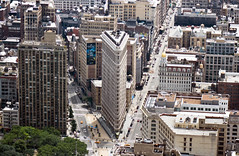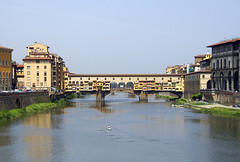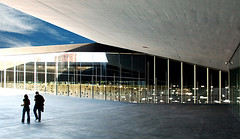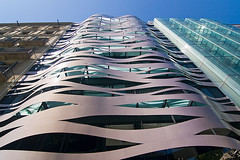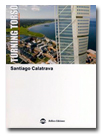ESPAÑOL
Cliente: Bodegas Marqués de Riscal
Arquitecto: Gehry Partners, LLP
Uso: Mixto
Superficies: Rehabilitación 2000 m²,
Nueva Construcción 6940 m²,
Edificio Principal (Hotel) 2800 m²,
Ampliación 4140 m²
Estilo: Deconstructivismo
Con el fin de renovar una de las bodegas más antiguas de la zona creando así una nueva seña de identidad, los Herederos de Marqués de Riscal encargaban al famoso arquitecto Frank O. Gehry un proyecto de gran envergadura para renovar sus instalaciones y cuyos promotores denominaron la “Ciudad del Vino”. La construcción de estas antiguas bodegas datan del año 1860 y fueron también renovadas en 1883. Las renovadas Bodegas Marqués de Riscal se encuentran localizadas en El Ciego, Álava, España, y ocupan una superficie de 100.000 m² para la elaboración, cuidado e investigación exclusiva del vino. Lo más destacado de la enorme renovación es, sin lugar a dudas, el edificio principal destinado a Hotel de lujo. El nuevo edificio llamado “A Luxury Collection Hotel”, se comunica por medio de una pasarela recubierta de titanio con la ampliación que incluye un moderno centro de spa. El arquitecto diseñó un edificio sobrecogedor gracias al impacto visual que ofrece de inmediato al visitante. Antes de su construcción, se realizaron también exhaustivas pruebas en el túnel de viento con las que se comprobó el comportamiento que tendría el edificio frente a los fuertes vientos.

Como si un tornado hubiese atravesado el edificio diseñado por Frank O. Gehry, este se alza victorioso y espléndido gracias a su revestimiento de planchas onduladas de titanio coloreado. Esta enorme estructura metálica a modo de piel, envuelve y le da forma a la imponente fachada; una plaza de bienvenida al edificio y que da acceso a la recepción, se sitúa a los pies de esta fachada. Los colores de la preciosa fachada con formas ondulantes están inspirados en las coloraciones propias de las botellas de vino de la prestigiosa marca; el color rosa por el vino tinto, el plateado por la cápsula de la botella, y el color dorado por la malla que cubre el tapón de corcho. El titanio coloreado cubre una superficie de 1800 m², mientras que el acero inoxidable 1750 m². Son también 3180 m² la superficie de diferentes voladizos llamados “canopys”, que fueron diseñados por Gehry para proteger el interior de la insolación directa; 1200 m² de muro cortina protegen el resto del edificio principal y la estructura de sustento la conforman 3 enormes pilares. El titanio coloreado de la fachada se combina con diferentes bloques revestidos de piezas de piedra natural en color beige.

La distribución del edificio cuenta con diferentes salas de estar, un bar, y varios restaurantes con terrazas que gozan de espectaculares vistas a la zona circundante. Son 14 las habitaciones en suite del Hotel y 29 en la ampliación. Una biblioteca enológica y un balneario con vinoterapia, completan los espacios de este nuevo e interesante proyecto. No hay que olvidar a Catia, un software innovador con tecnología aeroespacial que ha desarrollado la compañía Gehry technologies liderada por Frank O. Gehry, con la que se consigue digitalizar cada vértice de la maqueta de cada obra vanguardista que diseña este famoso arquitecto. Gehry cree que este nuevo edificio ubicado en El Ciego es el que mejor define su trabajo en este siglo XXI, ya que se consiguieron importantes avances con respecto al Museo Guggenheim de Bilbao. El prestigioso arquitecto Frank O. Gehry, autor de obras tan importantes como el Museo Guggeheim de Bilbao o la Sala de Conciertos Walt Disney en Los Ángeles, recibió el importante Premio Priztker, (Novel de la Arquitectura) en 1989.
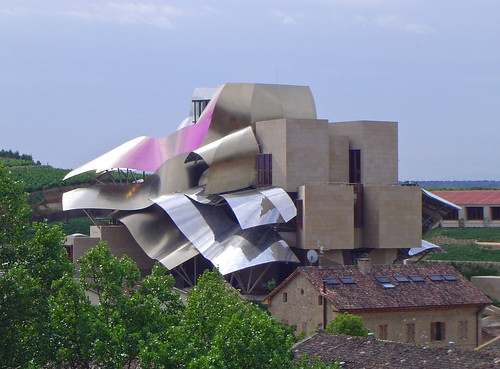
ENGLISH
Client: Bodegas Marques de Riscal
Architect: Gehry Partners, LLP
Use: Mixed
Area: 2000m ² Rehabilitation,
New Construction 6940 m²,
Main Building (Hotel) 2800 m²,
Extension 4140 m²
Style: Deconstructivism
In order to renew one of the oldest wineries in the area creating a new identity, the heirs of Marquis de Riscal commissioned the famous architect Frank O. Gehry a major project to renovate its facilities and whose promoters called the "City of Wine." The construction of these ancient cellars dating back no less than in 1860, were also renovated in 1883. Renewed Bodegas Marqués de Riscal are located in El Ciego, Álava, Spain, and occupy an area of 100,000 m² for the production, care and research exclusive of wine. The highlight of the huge renovation is, without doubt, the main building for luxury Hotel. The new building called "A Luxury Collection Hotel", is connected by a walkway lined with titanium expansion that includes a modern spa. The architect designed a building due to the overwhelming visual impact immediately offered to visitors. Before its construction, were also carried out extensive testing in wind tunnel that showed the behavior that would have the building against the strong winds.
As if a tornado had gone through the building designed by Frank O. Gehry, this emerges as the victor and splendid with its coating of titanium colored corrugated. This huge metal structure as a skin, envelops and gives shape to the imposing facade, a place of welcome to the building and gives access to the reception, is situated at the foot of this facade. The colors of the beautiful facade with undulating shapes are inspired by the colors of wine bottles of the prestigious brand, the pink for red wine, silver for the capsule of the bottle, and the golden color of the mesh covers the cork. Titanium colored covers an area of 1800 m², while the stainless steel 1750 m². They are also 3180 square meters area of different projections called "canopys" which were designed by Gehry to protect the interior from direct sunlight; 1200 m² of curtain wall protecting the rest of the main building and the support structure comprise three large pillars. Titanium colored facade blends with different blocks covered with pieces of natural stone in beige.
The layout of the building has several lounges, a bar and several restaurants with terraces to enjoy spectacular views of the surrounding area. There are 14 en suite rooms of the Hotel and 29 in the expansion. A library oenological and wine therapy spa, complete the blanks in this exciting new project. Do not forget to Cathy, an innovative software technology aerospace company has developed technologies led by Frank Gehry O. Gehry, with which it gets scanned every vertex of the model in designing avant-garde work this famous architect. Gehry believes that this new building in The Blind is the one that best defines his work in this century, as significant progress was achieved regarding the Guggenheim Museum Bilbao. The renowned architect Frank O. Gehry, author of such important works as the Guggenheim Museum in Bilbao or the Walt Disney Concert Hall in Los Angeles, was important Priztker Award (Novel of Architecture) in 1989.

All the images of the Winery Marqués de Riscal here
Images "Winery Marqués de Riscal" and "Text"
Copyright © José Miguel Hernández Hernández
Editor, Escritor y Fotógrafo de Arquitectura /
Publisher, Writer and Architectural Photographer
Todos los derechos reservados / All rights reserved
http://www.jmhdezhdez.com/
Related articles / Artículos relacionados
The IAC Building
New York City, USA
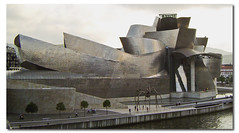
Guggenheim Museum Bilbao
Bilbao, Spain
BP Bridge
Jay Pritzker Pavilion, Millenium Park, Chicago, Illinois, USA
The Dancing House
Prague, Czech Republic
Fish
Barcelona, Spain
MUY IMPORTANTE!!! VERY IMPORTANT!!!
Deja tu comentario sobre este reportaje al pie de este post donde dice "Publicar un comentario en la entrada"; me será de gran valor para seguir mejorando este sitio web y te contestaré con la mayor brevedad posible... Muchas gracias!
No obstante, si te ha resultado interesante este reportaje y también el Blog en general, por favor, no dudes en hacerte Fan de la página de Fans del Blog de José Miguel Hernández Hernández en Facebook aquí
Nota importante: Una vez que hayas entrado en la página de Fans del Blog en Facebook, con sólo hacer click en el botón de "Me gusta", a partir de ese momento estarás al tanto de todos los nuevos reportajes interesantes relacionados con la Arquitectura y la Ingeniería que aquí se vayan publicando para no perder ningún detalle...
También puedes suscribirte por e-mail (te llegaría un e-mail con el enlace de cada artículo en el mismo momento en que sea publicado), o bien también puedes seguir el Blog a través de Twitter aquí
Nos vemos en el Blog!
Leave a comment on this story at the bottom of this post where it says "Post a comment in the entry", I will prove invaluable to further improve this website and I will answer as soon as possible .. . Thank you very much!
However, if you this story was interesting and the blog in general, please do not hesitate to make Fan Fans of the Blog page José Miguel Hernández Hernández on Facebook here
Very important: Once you enter the page Blog fan of Facebook, simply click on the button Like "From that moment you are aware of all new interesting stories related to the Architecture and Engineering are published here to avoid losing any detail ...
Can also subscribe by e-mail (I would e-mail with a link to each item in the same time it is published), or you can follow through Blog Twitter here
See you at the Blog!
HOME GEOGRAPHY ARCHITECTURE ENGINEERING SKYSCRAPERS
BRIDGES BUILDINGS TOWERS PUBLICATIONS ABOUT ME CONTACT
Copyright © José Miguel Hernández Hernández
Editor, Escritor y Fotógrafo de Arquitectura /
Publisher, Writer and Architectural Photographer
http://www.jmhdezhdez.com/ Leer más...
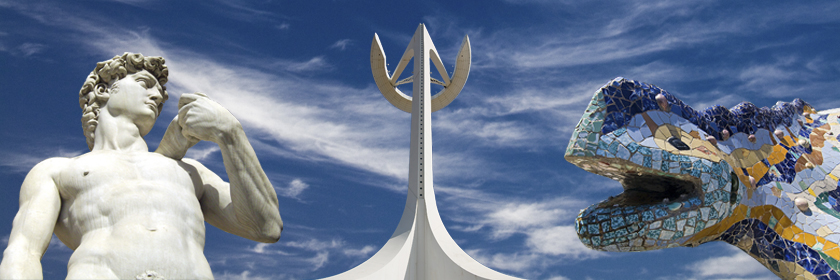

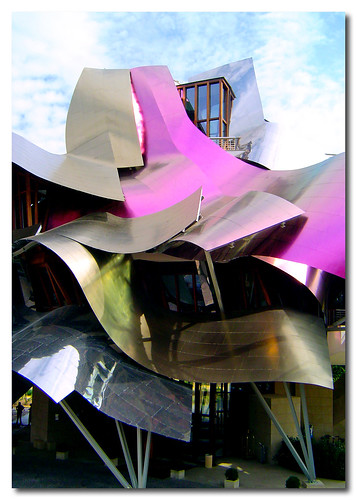

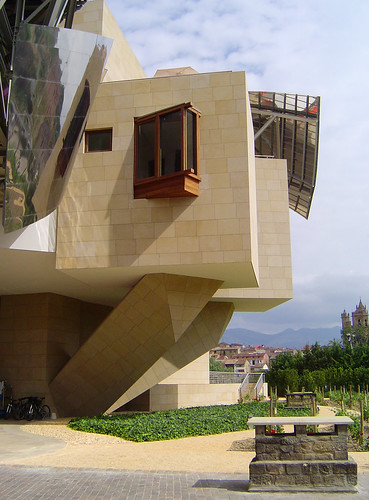



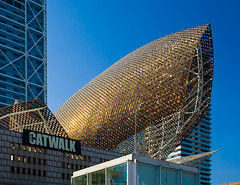


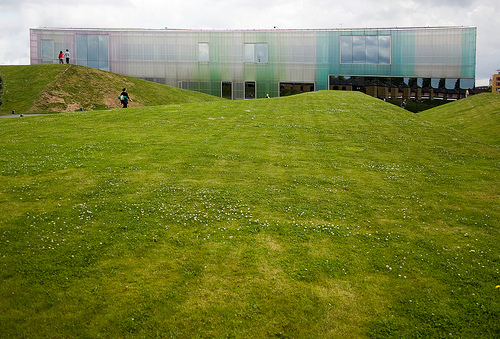

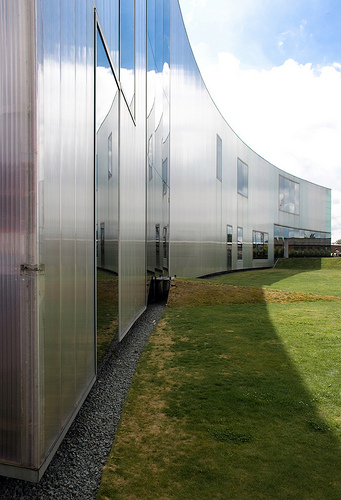
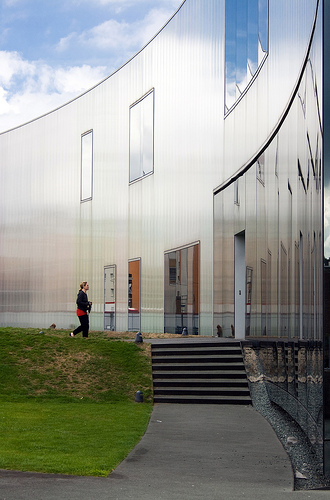
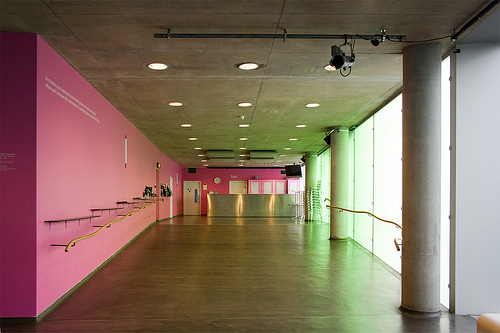
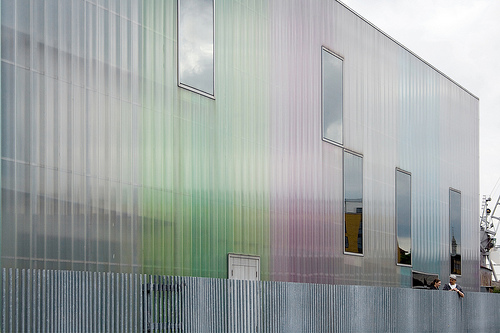
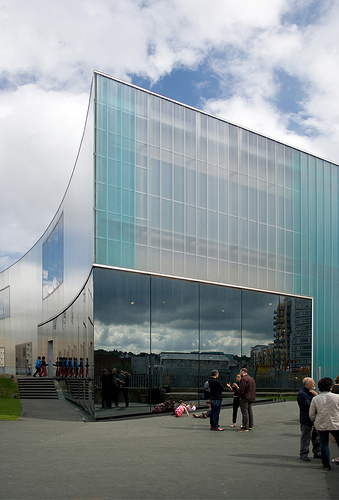
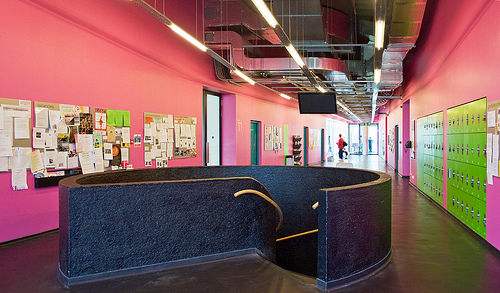
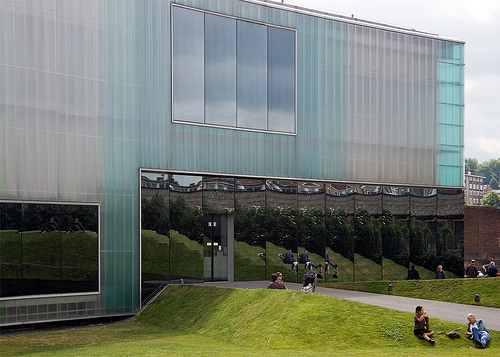



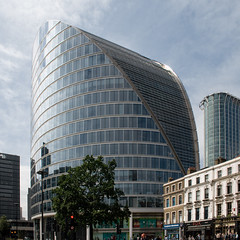


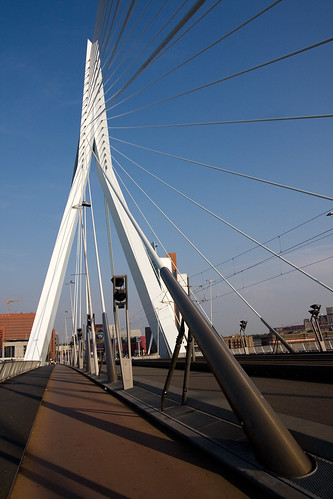
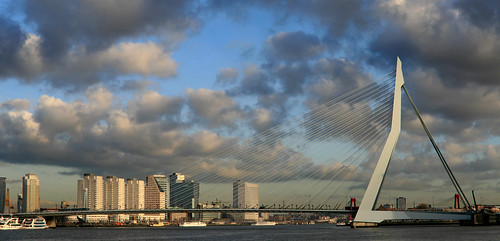
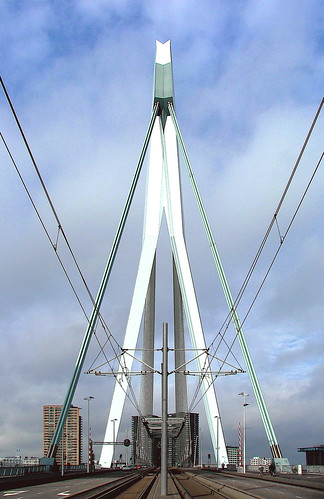



R.%27tHart_0908_049_hr_apppeque%C3%B1a.jpg)

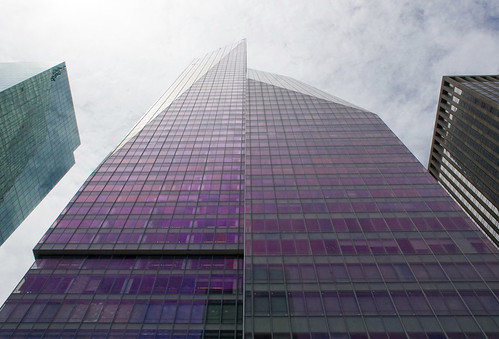


 Comparison chart that shows the profile of these three skyscrapers representing New York City, where you can see the different heights (in feet) that form the facade deconstructive Bank of America ... / Gráfico comparativo que muestra el perfil de estos tres rascacielos representativos de la ciudad de Nueva York, en el que se pueden apreciar las diferentes alturas (en pies) que conforman la fachada deconstructivista del Banco de América...
Comparison chart that shows the profile of these three skyscrapers representing New York City, where you can see the different heights (in feet) that form the facade deconstructive Bank of America ... / Gráfico comparativo que muestra el perfil de estos tres rascacielos representativos de la ciudad de Nueva York, en el que se pueden apreciar las diferentes alturas (en pies) que conforman la fachada deconstructivista del Banco de América...





